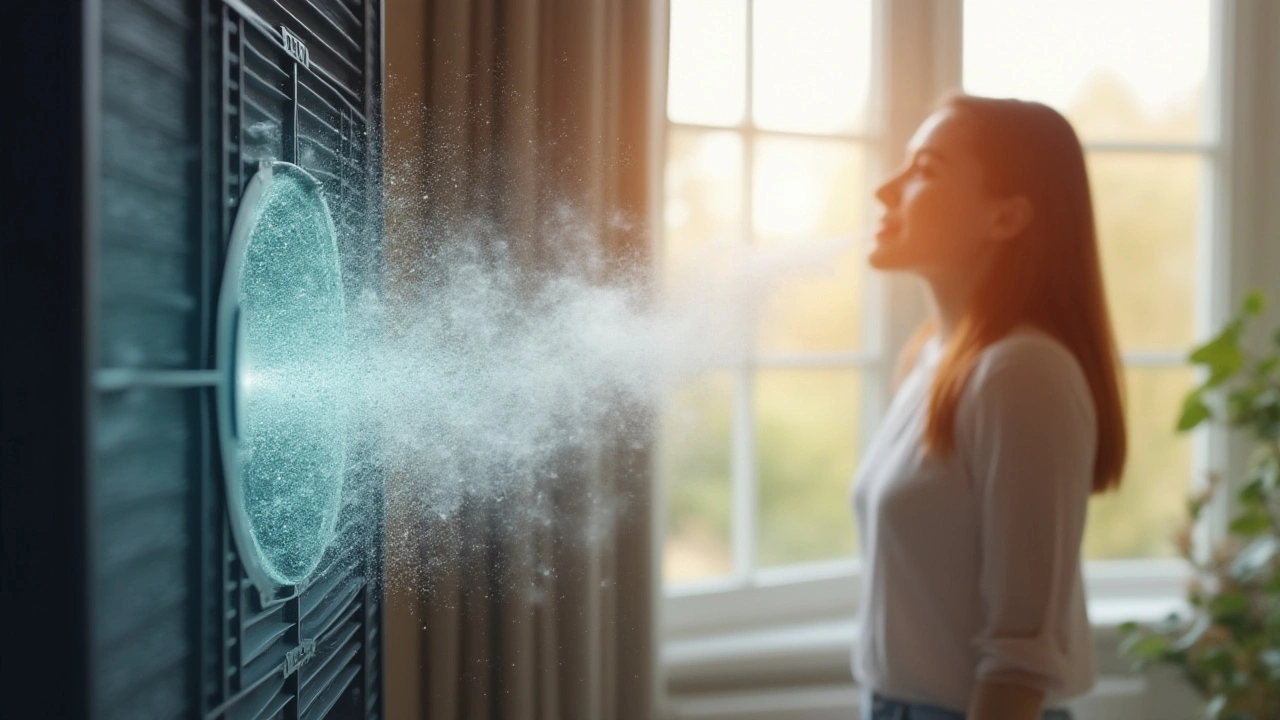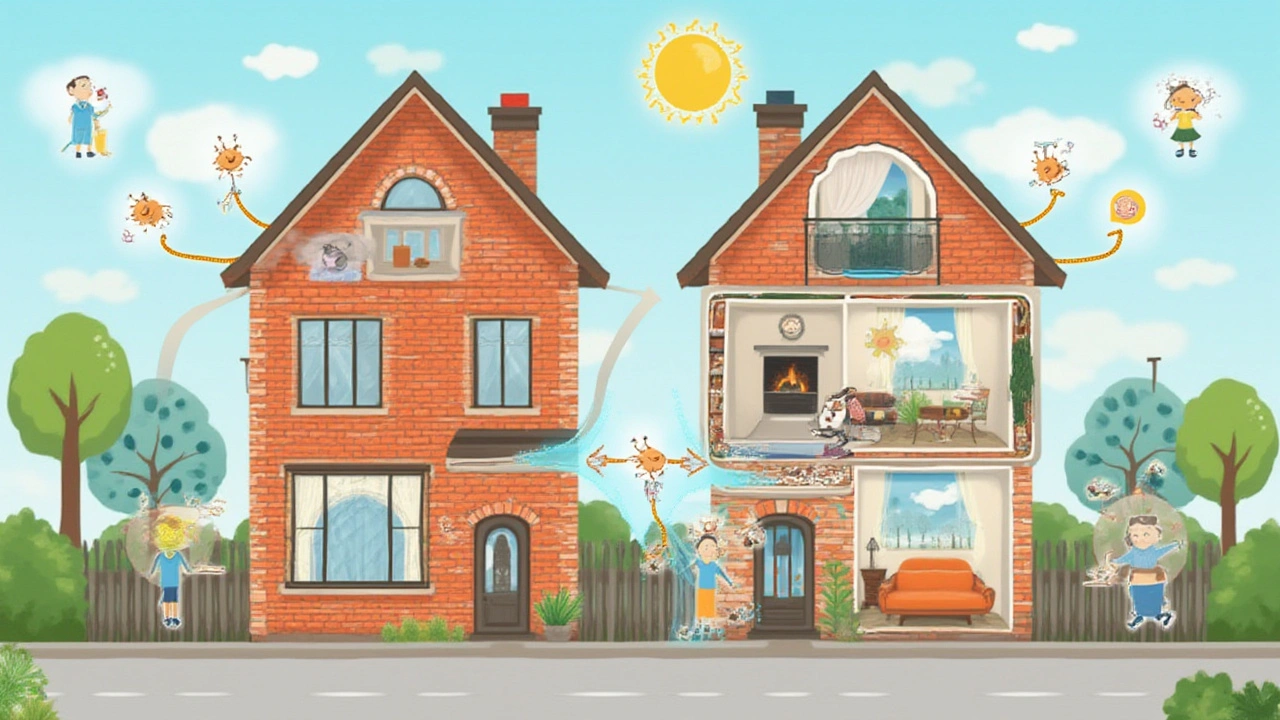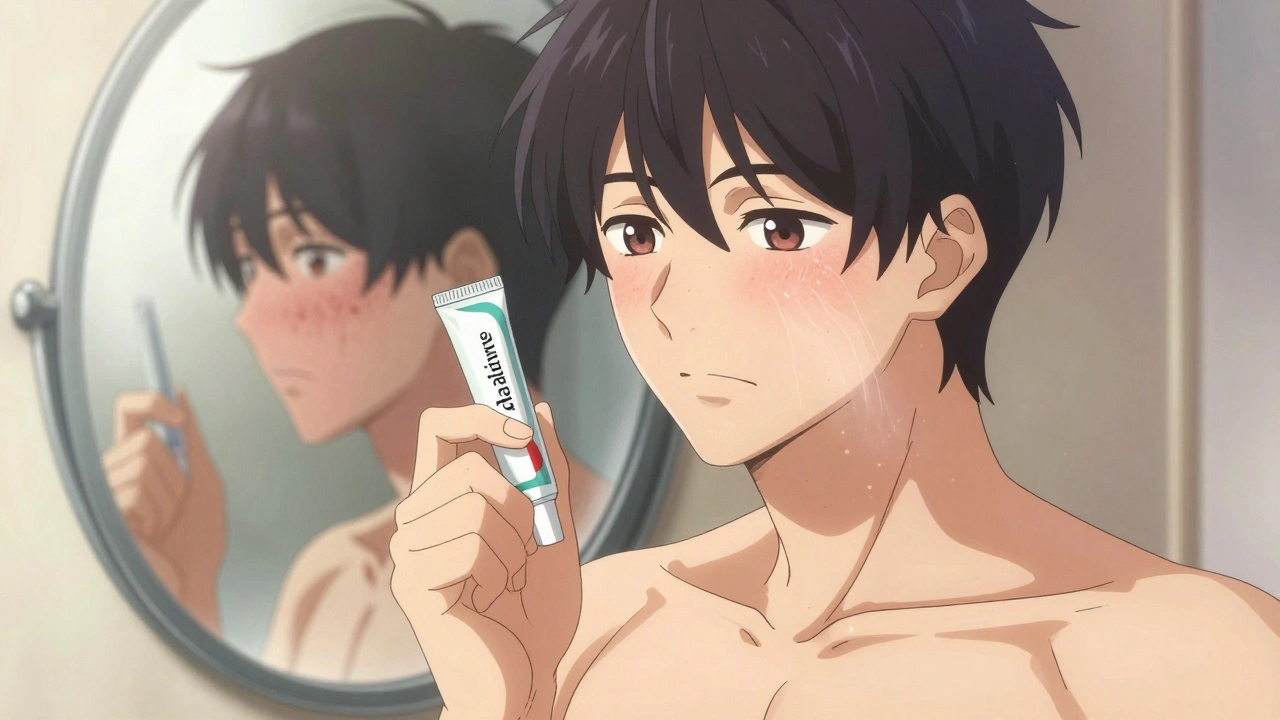Your home should be a safe haven, but if seasonal allergies make every breath feel like a gamble, something’s off. You might clean regularly, keep windows shut during peak pollen days, and stash tissues all over the place, but if you haven’t paid attention to your air filter, you’re missing a major piece of the puzzle. It’s wild that around 50 million Americans wrangle with allergies each year—nearly 1 in 6 of us, according to the American College of Allergy, Asthma & Immunology. Air filters, especially the right ones, can be silent heroes in this battle.
What's Inside Home Air: The Allergy Trouble-Makers
Ever imagine what floats around inside your home? If your nose and eyes are constantly irritated, your air probably carries an unwelcome mix: pollen sneaking in through door cracks, pet dander nesting in rugs, dust mites throwing their mini-parties inside your couch, and even mold spores drifting by, mostly invisible but totally relentless. On top of that, wild allergy seasons—like the one in 2024, when spring pollen counts spiked by 21% higher than the decade average—mean your home air gets loaded faster than you can say “achoo.”
Even if you scrub or vacuum, tiny allergens rebel with staying power. Standard vacuums can actually recirculate microscopic bits back into the air. So, air filtration becomes your steady, behind-the-scenes ally. It’s not about just trapping visible dust bunnies—most allergies are triggered by particles less than 10 microns wide. For reference, a human hair is 50-70 microns. Imagine how much can slip past an average filter if it’s not up to the job. Air filters work by forcing air through a fine mesh, catching those particulates before you can inhale them. Not every filter is equal, though. You’ve got to know your enemy—and your options.

How Air Filter Types Stack Up Against Allergies
Filters come in many flavors, from the cheap-and-cheerful fiberglass ones you see at big box stores to heavyweight HEPA contenders that promise 99.97% filtration power for particles as small as 0.3 microns. Sounds dramatic, right? But the differences matter:
- Fiberglass filters: Cheap and thin, these keep dust and lint off your HVAC but let a ton of allergens slip through. They’re not allergy fighters.
- Pleated filters: These have more surface area and catch finer particulates, but their quality varies. Look for high MERV-rated ones (more on that in a moment).
- Electrostatic filters: They use static electricity to trap particles, which actually works for smaller stuff like smoke and pet dander. They’re often washable, too, which saves cash long-term.
- HEPA filters: The gold standard. Hospitals use HEPA (High-Efficiency Particulate Air) filters to control infections. At home, a HEPA can snag nearly every speck of pollen, dander, or mite droppings sneaking through your vents.
- Activated carbon filters: While these don’t catch allergens directly, they’re ace at removing odors and fumes—helpful if your allergies are sensitive to scents or smoke.
If you want numbers, check out the MERV (Minimum Efficiency Reporting Value) scale. Basic filters rank around MERV 1-4, catching only the biggest stuff. Pet owners or allergy sufferers usually need at least MERV 11-13, filtering out smaller allergen particles. HEPA is basically off this chart—think of them as ultra-rated.
| Filter Type | Particles Filtered | MERV Rating | Perfect For |
|---|---|---|---|
| Fiberglass | Large dust, lint | 1-4 | Basic dust control only |
| Pleated | Dust, pollen, mold | 7-13 | Allergy-prone households |
| Electrostatic | Pollen, pet dander, smoke | 8-13 | Homes with pets/kids |
| HEPA | Nearly all airborne allergens | N/A | Severe allergies/asthma |
Here’s the catch: not every home HVAC can handle HEPA filters, since the thick mesh may restrict airflow too much. Before you rush to upgrade, check your system specs or talk to an HVAC pro. Clogging the system could actually lower air quality and mess with efficiency, especially in older systems. If you use portable air cleaners, HEPA is usually the go-to—just make sure the cleaner is rated for your room size. If you really want to go all-in, some households use layered approaches: a good HVAC filter plus one or two room-specific HEPA cleaners.

Choosing the Right Air Filter for Your Home and Routine
So, you’re staring at a row of filters in the store aisle or scrolling through endless online options—what now? The trick is matching what’s on the box to your own life. Here’s how to zero in on what’s likely to work best for allergy relief:
- Check your allergies. Do you deal more with pet fur, tree pollen, or dust? Read filter labels carefully: most list their specialty.
- Consider square footage. If you’re filtering an entire house via HVAC, grab filters sized for your unit’s specifications (check the old one for size). For room units, measure square footage to make sure your air purifier isn’t undersized.
- Mind the MERV. For decent allergen control, aim for at least MERV 11. Family with asthma or severe symptoms? Crank it up and see if your system can take a MERV 13 or higher.
- HEPA for high stakes. Got a young child with allergies or a bedroom that’s your safe spot? HEPA air purifiers in those zones can make a massive difference, even if you can’t outfit the whole house that way.
- Pay attention to replacement. Even top-shelf filters don’t last forever. Typical HVAC filters need swapping every 1-3 months, sometimes more during allergy season. Waiting too long just traps allergens in the system and reduces airflow.
- Reusable or disposable? Washable electrostatic filters save money and waste but need regular cleaning—slack off, and they can even make things worse. Disposable pleated or HEPA filters are lower-maintenance, but you’ll need to keep an eye on the calendar.
- Don't forget pets. Homes with furry friends need higher filtration and more frequent filter changes, since dander and hair clog things up fast.
If cost is a concern, remember: paying a bit more for a quality filter beats shelling out for allergy meds, doctor visits, or lost sleep. A 2023 Consumer Reports roundup found that switching from a standard $5 fiberglass filter to a $25 high-MERV pleated filter reduced allergy symptoms in 70% of families polled.
Here’s a step-by-step on picking a winner:
- Pop out your old filter and snap a picture (or jot down the size).
- Check your HVAC or air cleaner manual—find the max MERV it can handle.
- Decide on priorities: strict allergy defense, odor control, or just basic dust reduction?
- Look for credible certifications (like True HEPA or AHAM Verified for air purifiers).
- Set a filter-change reminder. It’s easy to forget once it disappears inside the vent.
Here’s a pro tip that doesn’t get enough attention: keep windows and doors closed during high-allergen days, and run ventilation with the right filter instead of opening up. Also, place portable air purifiers in often-used rooms—bedroom, kitchen, living room—to get the best bang for your buck. The EPA even confirmed that portable HEPA units, when run continuously, can drop indoor particulate levels by up to 65%.
And if you’re part of the growing group doing home workouts, yoga, or have babies crawling all over the floor, boosting your air filter is truly worth it. Airborne allergens love to settle onto surfaces—and then get kicked back up with every step or stretch.
A little research and a good filter transform indoor air from sneezy to soothing. Next time the pollen charts go red or your pet’s extra fluffy, you’ll be ready to breathe easy—and, finally, give your nose a much-needed break.






Evelyn Shaller-Auslander
July 15, 2025 AT 04:31i switched to a MERV 13 last spring and my sneezing fit count dropped from 20 a day to like 3. game changer. also stopped buying those $3 fiberglass ones after i realized they’re basically air decoration 😅
Gus Fosarolli
July 15, 2025 AT 23:05HEPA filters are the MVPs of allergy warfare-unless your HVAC screams like a banshee trying to breathe through a sock. then you’re just paying for noise and regret. 🤫
Emily Rose
July 16, 2025 AT 19:04if you’ve got kids or pets, skip the cheap stuff entirely. i used to think i was saving money with $5 filters-until my daughter’s asthma flare-ups became weekly events. switched to a True HEPA purifier in her room and now she sleeps through the night. no more 3 a.m. inhaler drama. this isn’t luxury, it’s basic care.
Benedict Dy
July 17, 2025 AT 21:11It is worth noting that MERV ratings above 13 are not universally advisable. Many residential HVAC systems are not engineered to handle the increased static pressure. Improper installation may lead to compressor failure, duct leakage, or even carbon monoxide backdrafting. This is not a trivial matter. Consult a certified technician before upgrading.
John Power
July 19, 2025 AT 17:37big +1 to everyone talking about HEPA in bedrooms! my wife and i run a small purifier in there and it’s like night and day. also-set a phone reminder to change filters. i missed mine for 6 months once and it was like breathing through a dusty blanket. don’t be me.
Scott McKenzie
July 20, 2025 AT 21:58HEPA + humidifier combo = 🤯 absolute magic. my dry, itchy eyes? gone. my dog’s dander? basically vanished. i use a Levoit in the living room and a Honeywell in the bedroom. spend the extra bucks. your nose will thank you 🙏❤️
Jeremy Mattocks
July 21, 2025 AT 08:29okay so i’ve been doing this for over a decade now and let me tell you, most people don’t realize that air filters are only half the battle. you’ve got to combine them with regular deep cleaning-vacuuming with a HEPA-filtered vacuum, washing bedding in hot water weekly, using allergen-proof mattress covers, and even wiping down surfaces with a damp cloth daily. if you just slap a fancy filter in and call it a day, you’re fooling yourself. the allergens don’t just disappear-they relocate, multiply, and wait for you to let your guard down. i used to think the filter was enough until my allergies got worse after switching to a MERV 12. turned out my couch was a dander volcano. now i clean everything. every. single. week. it’s not glamorous, but breathing without a nasal spray? worth it.
Paul Baker
July 23, 2025 AT 04:03filter changed every 2 months and still sneezing 😭 maybe its the cats maybe its the pollen maybe its my soul
Ron Prince
July 24, 2025 AT 19:43why are we all so obsessed with filters? in my day we just opened a window and breathed. now you need a NASA-grade system just to not cough. this is why america is weak. also MERV ratings are just marketing. buy a $10 filter and stop overthinking it.
Sarah McCabe
July 26, 2025 AT 04:45just moved from ireland to texas and my allergies went full apocalypse. switched to a HEPA purifier and now i can actually enjoy spring without crying in the garden 🌸😭
King Splinter
July 27, 2025 AT 06:04you guys are overcomplicating this. if you’re allergic to everything, maybe you should just move to a desert. or stop owning pets. or stop going outside. the filter isn’t the problem, your body is. also, why are you even reading this? go touch some grass.
Leigh Guerra-Paz
July 27, 2025 AT 17:24PLEASE, PLEASE, PLEASE-don’t forget to check the airflow direction on your filter! I replaced mine backward once, and even though it looked right, it was basically useless. I didn’t realize until my filter turned black in two weeks, and my husband said, ‘Why is the air still so dusty?’ I felt so dumb. Also, if you’re using a reusable electrostatic filter, wash it in lukewarm water with mild soap, and let it air-dry COMPLETELY-any moisture left = mold city. I learned this the hard way after a 3-week sinus infection. Now I have a sticky note on my HVAC: ‘CHANGE: 1st of Month.’ It’s saved my sanity. And yes, I’ve started buying two filters at once so I’m never caught off-guard. You’re welcome, future me.